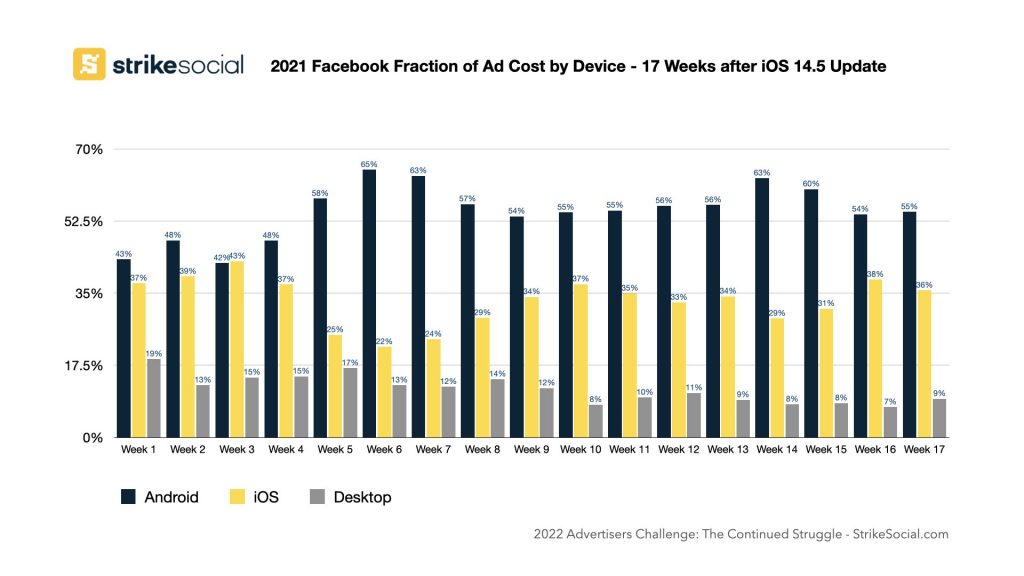The advertising industry closed the year strong, shrugging off the looming concern of the new covid strain, the Omicron variant. Fueled by the economic recovery, Zenith Media envisions an almost 19 percent increase in U.S. Ad Spend growth from $240 billion in 2020 to $285 billion. Pure play digital advertising sales will see more upsurge this year via the marketplace besides finishing 2021 with a 37 percent. Despite the record high, last year’s challenges made advertisers’ stay agile and quick to react in optimizing campaigns. We might see a similar trend this 2022.
Related: Deliver More Results On Tentpole Events With Always-on Advertising
As we embark on a new year, ad agencies and advertisers look forward to seeing positive trends continue into 2022. Highlighting this year are three momentous cyclical events: Beijing 2022 Winter Olympics from February 4 to February 20, quadrennial Fifa Men’s World Cup Qatar 2022 will take place from November 21 to December 18, and 2022 United States Senate elections on November 8, 2022.
Despite the glorious viewership of tentpole events, we have seen the decline over the past two years and unforeseen circumstances abrupt these top gatherings. The most recent tentpole conundrum is the postponement of the “64th Annual Grammy Award Show.” Due to the rising COVID-19 cases, CBS decided to push back the event. It has caused a delay to millions of dollars on ad spending. Brands that are affected might have to deal with these delays rashly.
Turning 2021 Advertising Woes into 2022 Wows
Last year wasn’t just a walk-in-the-park for brands and agencies. It may have recorded historical spending and advertising figures. But running a successful campaign means weaving through multiple advertising hurdles for some marketers.
Similar to the tentpole conundrum, privacy updates, increasing advertising costs, and the unfamiliarity of rising platforms are instances that molded the industry landscape. Here are some advertisers’ challenges that brands will continue to conquer and turn into opportunities this 2022.
Growing Cost of Facebook Ads

Related: Apple iOS Security Updates Gave Advertisers the Cold Shoulder
If advertisers’ can rank the most talked about topic, Facebook’s losing 3rd party cookies to Apple iOS 14.5 will be on top of their list. Consumers have been requesting to prioritize online safety and security at a great length. Until 2021 Q1, the giant mobile company responded with an iOS security update removing Apple users’ data to advertisers.
Social advertisers saw a domino effect a few months after Apple had implemented the new privacy protocol. Facebook pixels lose track of most website activities, inefficient retargeting of audiences, delayed reporting, and data skewness. These factors have contributed to the rise of Facebook ad costs during 2021 Q2, especially when targeting iOS mobile users.
Managing Facebook ad campaigns in 2022 will be no different from the previous year as brands have expected to lose more 3P data. At the same time, being the top social ad platform, it will continue to optimize and improve its algorithm to provide more stable ad costs.
Scaling Connected TV Ads
Related: YouTube Makes Ads on Connected TV More Shoppable
Insider intelligence estimates that the monthly US CTV user base is almost 214 million people compared with 209 million before the pandemic. While the trend on communal screens continues to grow, ad spending follows.
Diving into CampaignLab.ai’s YouTube data, CTV view share is up 20 percent to 50 percent year-over-year for most verticals. While total YouTube time is up across all devices, the largest screen saw the most significant increase in share. Most marketers will still see more views on mobile devices in a standard TrueView campaign optimized to views or impressions. However, it’s often about 45%+ of views going to mobile platforms and 40%+ going to CTV, with the rest of the views being seen on tablets and desktops. Only a few verticals saw an increase in mobile share vs. CTV, which may have emphasized clicks or radius targeting.
Across the board, our data scientists have seen a 9 percent shift of YouTube viewership from mobile to other platforms. At the same time, CTV gained a viewership share of almost 14 percent.
During the onset of the larger screen popularity, questions about CTV ad measurability, brand safety, and ad performance hinder brands from jumping into the craze. However, with the recent developments of Google, YouTube’s Video Action Campaign, companies can now leverage their ad to turn advertisers’ challenges and explore untapped possibilities.
Keeping up with the advertising platform cadence
With new updates and advertising platform features coming out almost every day, advertisers’ challenges won’t slow down this 2022. Through machine learning, media agencies and brands can keep pace with these emerging trends. With fewer required staff hours in strategizing, implementing, and managing because of A.I. Automation, companies can create essential content that is mutually beneficial for consumers and brands.









